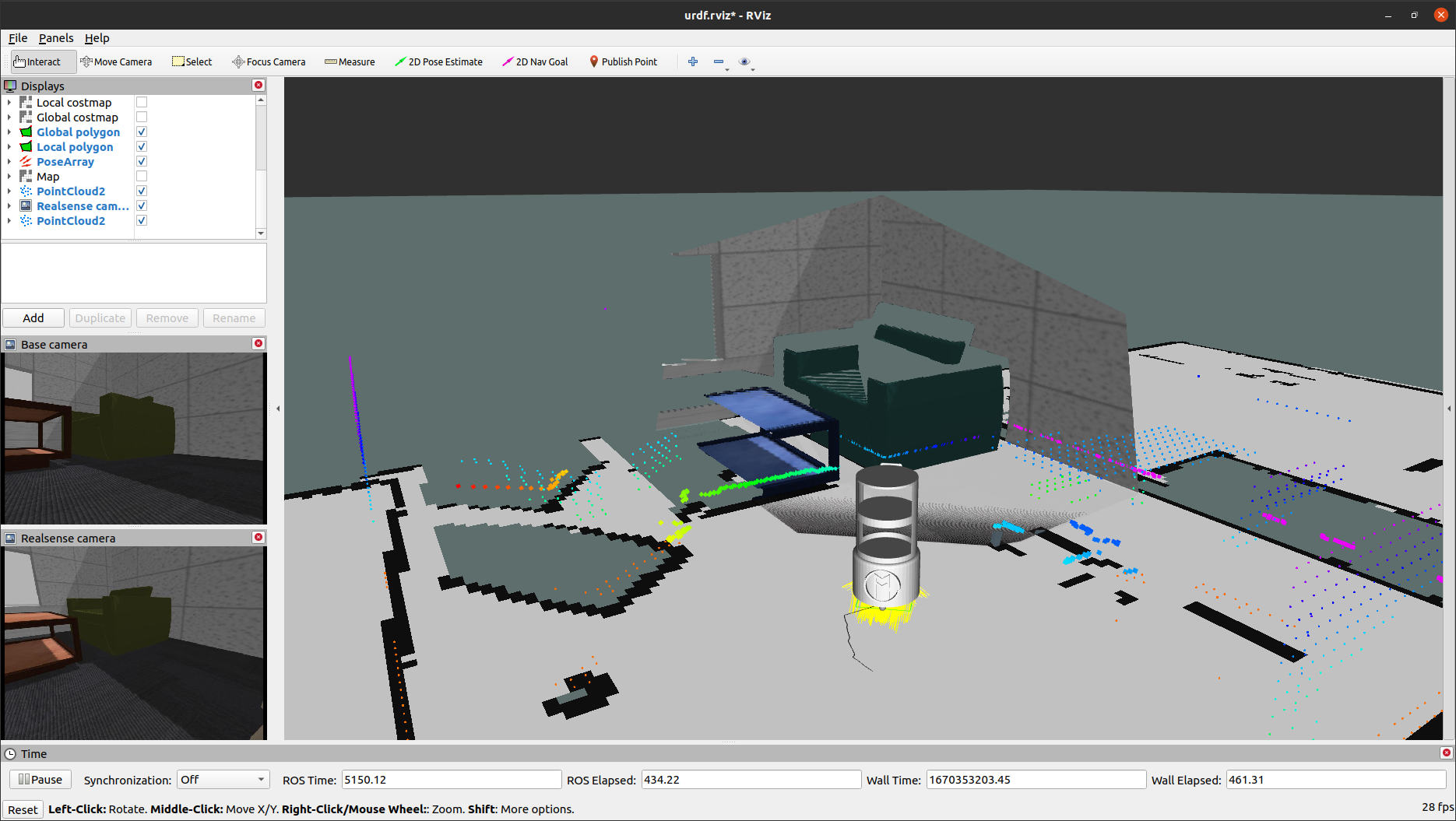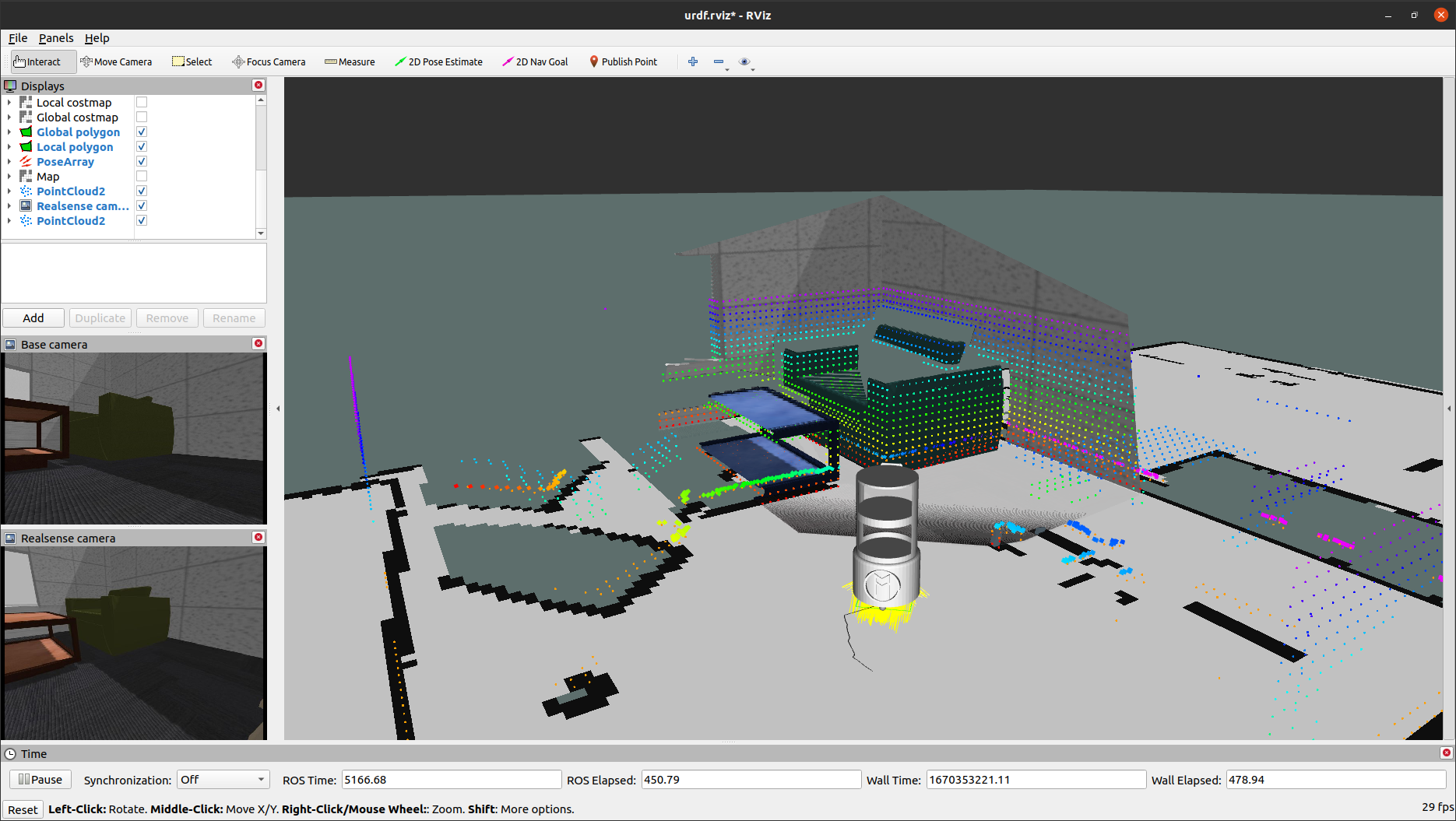This is a personal project to create a waiter robot that can autonomously navigate a restaurant and serve customers.
I am doing this project to practice my skills in ROS, Gazebo, and robot description (using Fusion 360). I am also doing this project to learn more about the ROS navigation stack, Gmapping, and how to use them to create a robot that can navigate autonomously.
The robot is equipped with a 2D LiDAR, an Intel RealSense D435 camera, and a regular RGB camera. The 2D LiDAR is used to create a 2D map of the environment with the aid of Gmapping, whereas the RGB-D camera is mainly used to avoid obstacles when navigating. Both cameras will be later used to detect customers and serve them. Besides, its motion model is a differential drive.
The images below illustrate the robot navigating through the environment while it builds a partial 3D map of the environment. Such a partial 3D map perfectly matches with the 3D point cloud from the RealSense camera.
So far, there are two launch files that can be used to run the robot:
- Autonomous navigation: This launch file will launch the robot in Gazebo and RViz. The robot will navigate autonomously through the environment while avoiding obstacles.
roslaunch circular_waiter_robot_description autonomous_navigation.launch- Autonomous mapping: This launch file will launch the robot in Gazebo and RViz. The robot will navigate autonomously through the environment while building a 2D map of the environment.
roslaunch circular_waiter_robot_description autonomous_mapping.launch- Python scripts to make the robot navigate autonomously
- Include more info to this README file
- Develop Gazebo scripts to make the robot interact with the environment (get and delivery plates, etc.)
- Include the dependencies to the README file
- Include object detection package to the project

